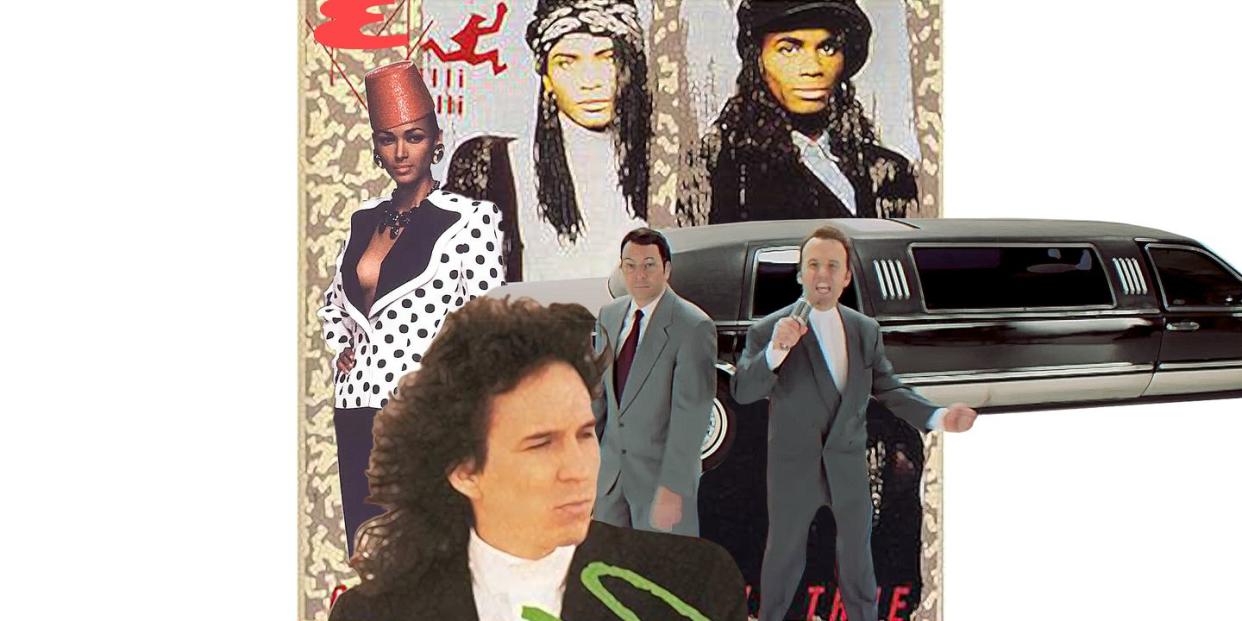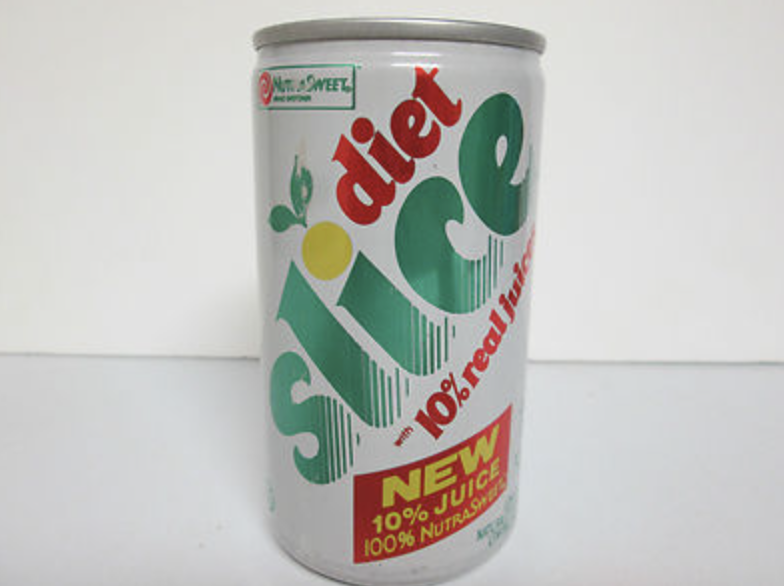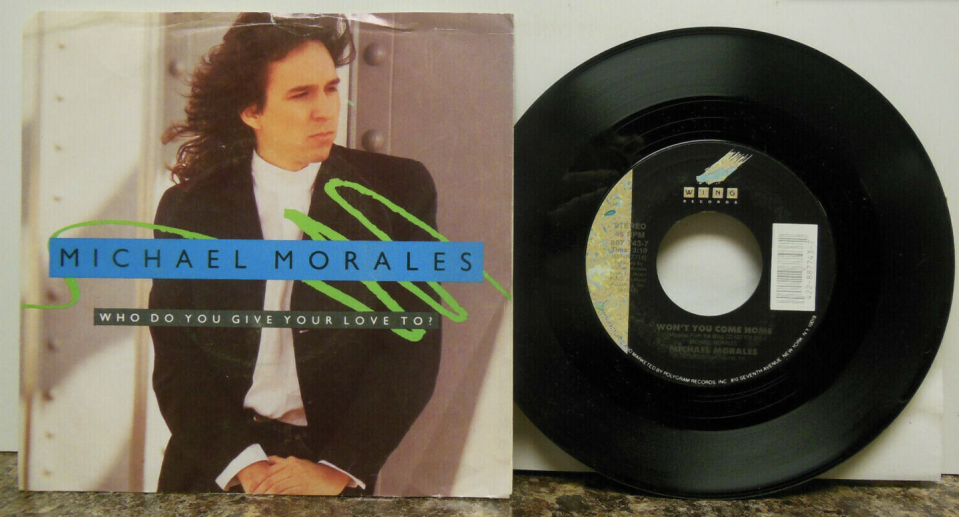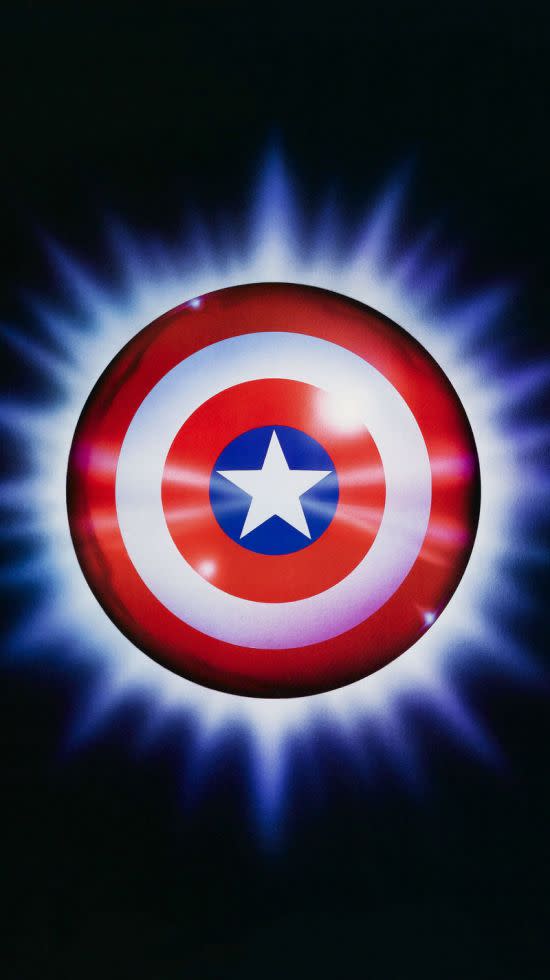The Two Weirdest Years in Music

- Oops!Something went wrong.Please try again later.
There is a moment in musical history, at the end of the ‘80s and the beginning of the ‘90s, that is not quite the former and not yet the latter. A formless, colorless span of time whose music can’t be lumped in with the peppy, preppy pop and rock of the Reagan era nor the groundbreaking indie, R&B, and hip-hop of the Clinton years, and is thus in danger of being forgotten. It’s not even a span of time as much as a silver. A slice: two or three strange years as one era evolved into another. This Slice is fizzy and sweet and ultimately not satisfying. It is the Diet Slice.

The Diet Slice gets its name from the low-calorie version of Slice, a popular soft drink of the time which set itself apart from its shelf-mates by claiming to be somewhat natural; its can crowed “with 10% real juice,” later downgraded to “contains real juice,” and although I eventually stopped paying attention, I bet toward the end it was more like “is technically a liquid.” As a beverage, it was refreshing and indistinct. Like the music of the time, you would consume it if it were there, but you are never thirsty for it.
The defining characteristic of the Diet Slice is that it is the one time in pop music history when the ideal demographic seems to have been middle-aged. If the music of the MTV ‘80s and the Nirvana ‘90s were separate and high-Richter youthquakes, the Diet Slice looked America’s teenagers in the eyes and said: “Here is Michael Bolton, Cher, and Anita Baker. Have fun.” The Billboard number one single from 1989 was “Look Away” by a post-Peter Cetera Chicago. Go West dialed its synth-funk down and its middle-of-the-road tendencies up, and gave us its only real U.S. hit “King of Wishful Thinking.” Wilson Phillips held on, and then released us, and then we released them. Secretaries were living. Listen At Work Stations were thriving.
Aesthetically, the Diet Slice is actually more coherent than the eras before and after. The ‘80s were not as day-glo as our culture remembers them, nor were the ‘90s as earth-tone flannel, but the Diet Slice was uniformly black and white. The videos for Madonna’s “Vogue” and Paula Abdul’s “Straight Up” were black and white, the wardrobes of Milli Vanilli, Martika, and Fine Young Cannibals were black and high-waisted. Here is the image that is the most Diet Slice: the single cover for the 1989 song “Who Do You Give Your Love To” by Michael Morales.

The hair? The white shirt under the black suit? The name in a utilitarian font with a Hi-Liter-green crayon squiggle across it, just because? This is prime Diet Slice. So is the song, a legitimate top 20 hit that you can listen to and forget at the exact same time.
There were Michael Moraleses aplenty in the Diet Slice: Glenn Medeiros, a teenager who sounded like an adult-contemporary artist, then teamed with Bobby Brown for “She Ain’t Worth It,” which had the mystifying effect of making Bobby Brown sound like an adult-contemporary artist. Will To Power, a studio band that wanted to make dance music but only broke through with an easy-listening medley of “Freebird” and “Baby I Love Your Way” that went to number one despite nobody ever listening to it on purpose. Breathe, who heard the band name “Bread” and said "let’s call ourselves something like that, but less threatening." (Breathe was ballad-heavy, but released a track called “Don’t Tell Me Lies” that counts as a banger in the Diet Slice.)
We had some of our best one-hit wonders during the Diet Slice: Kon Kan’s “I Beg Your Pardon,” Jane Child’s “Don’t Wanna Fall In Love,” Soho’s “Hippychick.” We also had our three worst: Rythm Syndicate’s “P.A.S.S.I.O.N.” [all SIC], 2 In a Room’s “Wiggle It,” and Kyper’s “Tic Tac Toe,” a song which posits that sex is like tic tac toe and then offers no supporting evidence that sex is like tic tac toe.
Hair metal was limping by at this point, so the bands whose bravado had dominated the mid-‘80s fell back on the tried and true: the slow dance. The Diet Slice was a golden age of power ballads from bands better known for party songs (Warrant’s “Heaven,” Poison’s “Every Rose Has Its Thorn,” Tesla’s “Love Song”), power ballads from bands who showed up too late to sell their party songs (Mr. Big’s “To Be With You,” Slaughter’s “Fly To The Angels,” Extreme’s “More Than Words,” which for a song with “words” in the title is a grammatical disaster), and power ballads from freestyle artists (Timmy T’s “One More Try,” Expose’s “When I Looked At Him,” Sweet Sensation’s “If Wishes Came True.”) Even Guns N’ Roses softened their sound for a moment with “Patience,” which predicted the era of MTV Unplugged and is infinitely preferable to “November Rain.”
Hip-hop went ultra-mainstream in 1990, but by 1991, three of the artists with the biggest hits on the pop chart flamed out in fascinating ways. MC Hammer followed Please Hammer Don’t Hurt ‘Em with 2 Legit 2 Quit, whose title track was accompanied by one of the most-expensive music videos to date, starring Jim Belushi, Jose Canseco, and Tony Danza. Vanilla Ice parlayed his number one hit “Ice Ice Baby” into his film debut Cool As Ice, and the world replied in one unified voice: “No, thank you.” Digital Underground gave us “The Humpty Dance,” and then gave a great track called “Same Song” to a troubled Dan Aykroyd movie called Nothing But Trouble. (But the song also gave Tupac Shakur his first recorded verse, so it was not in vain.)
A proper Beverly Hills, 90210 soundtrack would not be released until 1992, but its track listing asks us to believe that Brandon and Kelly and Dylan were listening to Vanessa Williams, Tara Kemp, and Color Me Badd, which now that I think of it is actually plausible. But with fake high schoolers listening to adult contemporary, a Next Thing was clearly on the horizon, and a handful of Diet Slice artists give us a window into a world that might have been. Jellyfish was a Queen-esque Los Angeles band whose debut album Bellybutton is pure power-pop. They didn’t make it, but they did give us Jason Falkner, and that’s enough. A’Me Lorain was a post-Debbie Gibson pop starlet who had a top ten hit with a banger called “Whole Wide World” but was unfortunately eaten by her own wardrobe on a Club MTV appearance. Enuff Z’nuff nudged hair metal in a slightly more psychedelic direction in the genre’s fifteenth minute. And of course Deee-Lite gave us “Groove Is In The Heart” and then largely faded away, but I do find it calming to imagine a world in which they and not Nirvana were the trio who changed the sound and style of the ‘90s. It could have been joyful! It could have been MDMA instead of heroin. Didn’t we almost have it all?
The one legit superstar who got their start in the Diet Slice survived beyond it by initially following its rules: Mariah Carey showed up full adult-contemporary (and dressed in black) for “Vision Of Love,” and stuck largely to ballads before she embraced hip-hop later in the ‘90s.
Sinead O'Connor arrived in the '80s but scored her biggest, "Nothing Compares 2 U," during the Diet Slice. It's a song so unforgettable that it puts her squarely outside this moment. Her hit was written by Prince, who had his own moment in 1989 with the soundtrack to Tim Burton's Batman, a movie that marked a new approach to summer blockbuster marketing. The single Bat Symbol—no text, aside from a release date—tantalized moviegoers into making Batman a smash in 1989, so Warren Beatty tried the same for 1990’s Dick Tracy. It did not work as well. But Hollywood kept trying this tactic: after Dick Tracy, multiplexes got pasted with posters containing only a red, white, and blue shield, a marketing blitz for the Captain America movie starring Matt Salinger—JD’s son!—which never even got released.

Highly-anticipated albums got released like summer blockbusters, often with first singles that crammed in as many ideas as three minutes could hold. The title tracks to Debbie Gibson’s Electric Youth and The B-52s’ Good Stuff are about five songs apiece, and none of them are especially pleasant. The exception to this rule is George Michael’s Listen Without Prejudice Vol. 1, whose first single was the thoroughly cohesive and impressively dour “Praying For Time” and whose second was the all-time banger “Freedom ‘90.” George didn’t appear in either of these videos, but every supermodel appeared in the video for “Freedom,” dressed in black and white.
The British charts were much more interesting in this particular moment, as house music began to take over: Yazz and the Plastic Population’s “The Only Way Is Up,” S’Express’s “Theme From S’Express,” and Adamski’s “Killer” did well over there, maybe because there was less of a stigma against trying ecstasy. Some of it—Technotronic, Black Box, Snap!— made the leap to the States, often by being featured in haircare commercials. Still more— Neneh Cherry’s “Buffalo Stance,” Rebel MC’s “Street Tuff,” and Betty Boo’s “Doin’ The Do— had a brief and cartoony moment out here before we shrugged our shoulders and made Amy Grant a mainstream pop star. (The UK did not avoid its own adult-contemporary moment, as Deacon Blue, Fairground Attraction, and Tanita Tikaram blew up. All the world has its dental hygienists.)
If you were 13 at the turn of the ‘80s to the ‘90s, the music that imprinted upon you forever is from mid-career Aerosmith, and you may be entitled to compensation. If you were middle-aged, you might have felt like you finally caught up to the culture, and then Nirvana happened and you were like: oh well, whatever, never mind. Either way, if you go into a Fantastic Sam’s right now, I bet one of these songs is playing.
Pop open the Diet Slice while you can, before it is forgotten for good. It contains real music.
Read More Essential Dave Holmes:
In Defense of Choosing a Musical Era and Living In It Forever
A Decade of Music Is Lost on Your iPod. Now Let Us Praise It.
You Might Also Like

